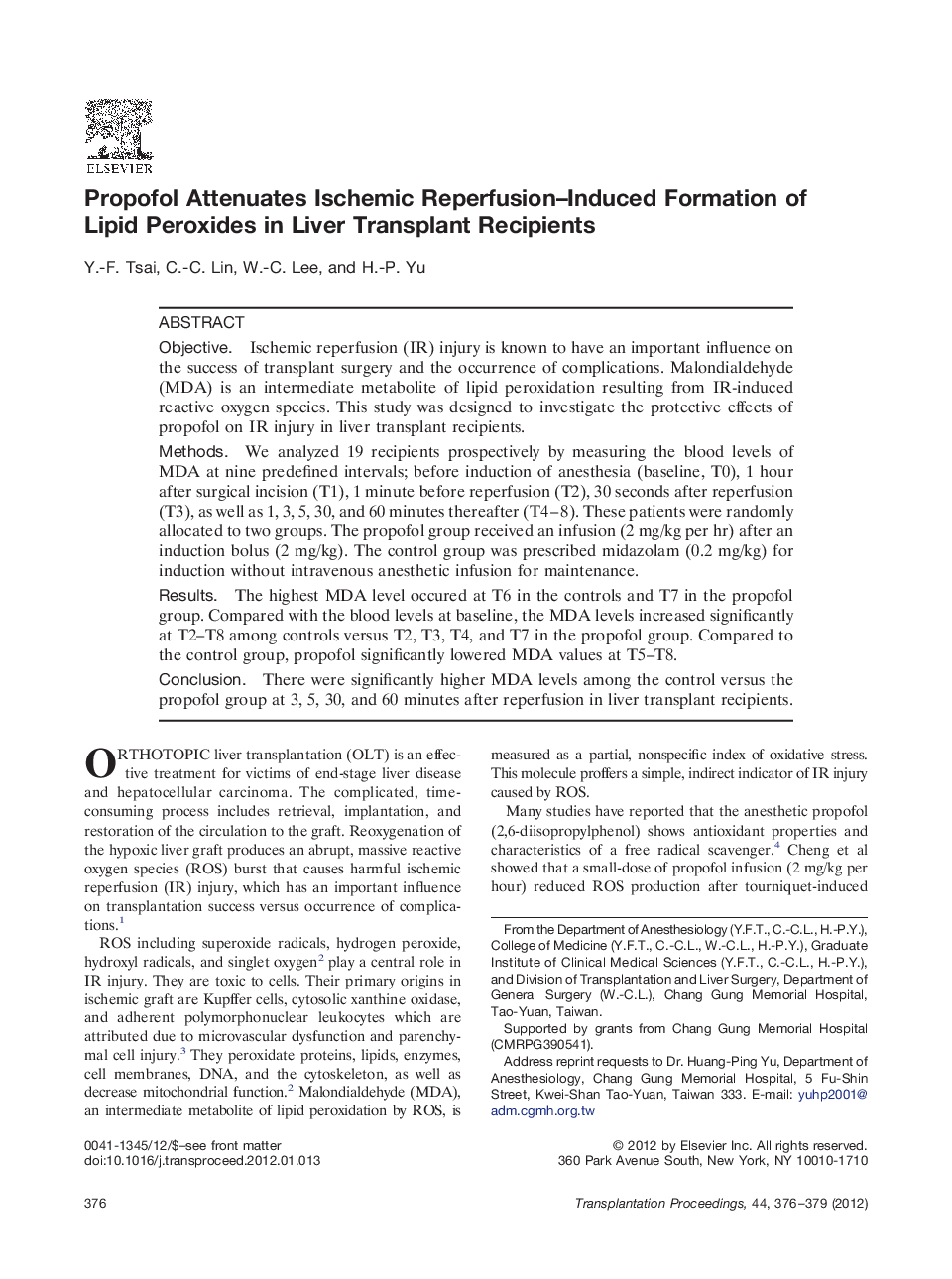| Article ID | Journal | Published Year | Pages | File Type |
|---|---|---|---|---|
| 4260352 | Transplantation Proceedings | 2012 | 4 Pages |
ObjectiveIschemic reperfusion (IR) injury is known to have an important influence on the success of transplant surgery and the occurrence of complications. Malondialdehyde (MDA) is an intermediate metabolite of lipid peroxidation resulting from IR-induced reactive oxygen species. This study was designed to investigate the protective effects of propofol on IR injury in liver transplant recipients.MethodsWe analyzed 19 recipients prospectively by measuring the blood levels of MDA at nine predefined intervals; before induction of anesthesia (baseline, T0), 1 hour after surgical incision (T1), 1 minute before reperfusion (T2), 30 seconds after reperfusion (T3), as well as 1, 3, 5, 30, and 60 minutes thereafter (T4–8). These patients were randomly allocated to two groups. The propofol group received an infusion (2 mg/kg per hr) after an induction bolus (2 mg/kg). The control group was prescribed midazolam (0.2 mg/kg) for induction without intravenous anesthetic infusion for maintenance.ResultsThe highest MDA level occured at T6 in the controls and T7 in the propofol group. Compared with the blood levels at baseline, the MDA levels increased significantly at T2–T8 among controls versus T2, T3, T4, and T7 in the propofol group. Compared to the control group, propofol significantly lowered MDA values at T5–T8.ConclusionThere were significantly higher MDA levels among the control versus the propofol group at 3, 5, 30, and 60 minutes after reperfusion in liver transplant recipients.
